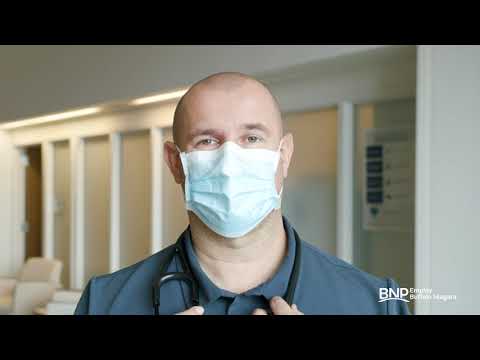What Does a Medical Assistant Receptionist Do?
Contents [show]
Find out what the duties of a medical assistant receptionist are and what skills you need to succeed in this important role.
Checkout this video:
Job Description
The medical assistant receptionist responsibility is to manage communication between patients and the medical staff. As the first person that a patient meets when coming into the office, it’s essential that they have excellent customer service skills. The medical assistant receptionist also needs to be able to handle a high volume of phone calls from patients with various questions. They may also be responsible for handling medical billing and scheduling appointments.
Duties
The medical assistant receptionist is responsible for greeting patients, scheduling appointments, answering phones, and performing other administrative duties in a medical office.
In addition to basic administrative tasks, the medical assistant receptionist may also be responsible for handling patient insurance and billing inquiries, ordering supplies, and maintaining medical records Some medical assistant receptionists may also be responsible for providing basic patient care, such as taking vital signs or assisting with minor medical procedures.
Qualifications
A medical assistant receptionist is responsible for greeting patients, answering phone calls, and performing clerical duties in a healthcare facility. There are many duties that a medical assistant receptionist may be responsible for, but the most important qualification for this position is excellent customer service skills. A medical assistant receptionist should be able to handle a high volume of phone calls, maintain a professional demeanor, and be proficient in completing administrative tasks.
Education
In order to become a medical assistant receptionist, you will need to complete a postsecondary education program. These programs are typically offered at community colleges, technical schools, and vocational schools. You can expect to complete your program within one year if you attend school full-time, or two years if you attend part-time.
Most medical assistant receptionist programs culminate in a certificate or diploma. However, some schools may offer an associate’s degree in medical assisting. While not required, an associate’s degree may give you a leg up on the competition when you are looking for jobs.
In your program, you will take coursework in Medical Terminology transcription, computer applications in healthcare, and office practices. You will also complete a clinical externship, which will give you the opportunity to put your skills to work in a real-world setting.
Training
Receptionists in medical offices are responsible for handling a variety of administrative tasks, including greeting patients, scheduling appointments, answering phones, and handling insurance paperwork. They may also be responsible for billing and coding. Most receptionists have at least a high school diploma, although some jobs may require postsecondary education, such as a certificate or associate degree in medical office administration. Receptionists must be well-organized and detail-oriented, with excellent customer service and communication skills.
Certification
Most Medical assistants have postsecondary education, although it is not required in all states. Many programs award a certificate upon completion, but some result in an associate degree. Eighteen states currently require certification for medical assistants. Two certification exams are available: the Certified Medical Assistant (CMA) exam through the American Association of Medical Assistants (AAMA), and the Registered Medical Assistant (RMA) exam through the American Medical Technologists (AMT).
Some community colleges and vocational schools offer programs specifically in medical assisting that last from one semester to two years. These programs typically result in a certificate or diploma. Some medical assistants get their training on the job after completing a high school diploma or equivalent, although this is not as common.
Salary
The Bureau of Labor Statistics reports that the median salary for medical receptionists was $32,350 in 2017. The lowest-paid 10 percent earned less than $22,340, and the highest-paid 10 percent earned more than $49,410.
Job Outlook
The medical assistant receptionist is responsible for greeting patients, scheduling appointments, and answering phones. They may also be responsible for billing and insurance tasks. This position is critical to the smooth operation of a medical office.
The job outlook for medical assistant receptionists is good. The Bureau of Labor Statistics projects an 11% growth in the field from 2019 to 2029. This is faster than the average for all occupations. An aging population and advances in medical technology will lead to a need for more support staff in medical offices.
Career Path
Medical assistant receptionists are the first point of contact for patients at a healthcare facility. They are responsible for greeting patients, scheduling appointments, handling customer inquiries, and maintaining Medical records A medical assistant receptionist may also perform administrative tasks such as preparing medical reports and filing insurance claims.
Education and Training
Most medical assistant receptionists have at least a high school diploma, although some jobs may require postsecondary education or training. Many community colleges offer certificate or associate degree programs in medical assisting, which can prepare students for a career as a medical assistant receptionist.
Skills and Qualities
In addition to strong customer service skills, medical assistant receptionists must be able to multitask and stay calm under pressure. They must also have a thorough understanding of the healthcare system and be able to answer patient questions accurately. Medical assistant receptionists should be detail-oriented and organized, with good computer skills.
Work Environment
Most medical assistant receptionists work in doctor’s offices, but they also work in hospitals and clinics. They spend a lot of time sitting, so their workstation should be comfortable. Receptionists who work in hospitals may have to deal with irate or impatient people who are waiting to see the doctor. In this case, they must be able to remain calm and professional.







